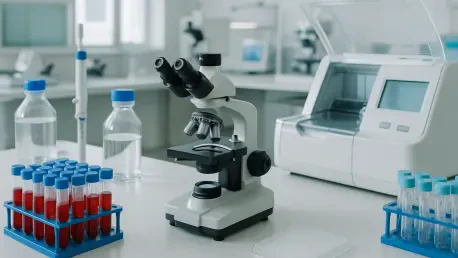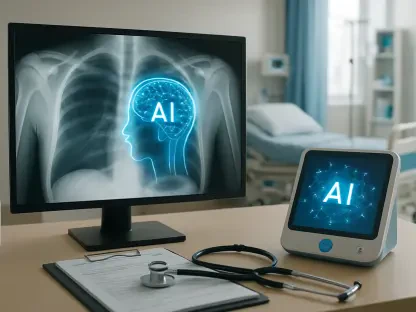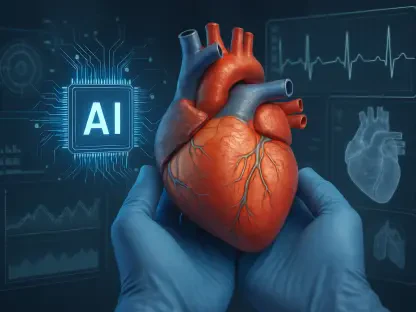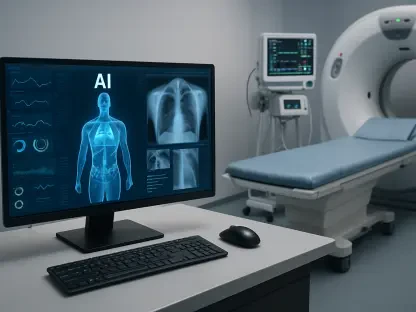In the dynamic landscape of healthcare across the Asia-Pacific region, a quiet revolution is unfolding through the power of in vitro diagnostics (IVD), fundamentally reshaping how diseases are detected, managed, and treated. This innovative field, which focuses on testing biological samples such as blood or tissue outside the human body, has emerged as a linchpin in modern medical practice. From enabling early detection of life-threatening conditions to personalizing treatment plans, IVD is not just a tool but a transformative force that bridges gaps in accessibility and precision. Its impact is felt in bustling urban hospitals and remote rural clinics alike, offering hope for better patient outcomes in a region with diverse healthcare challenges. As technology continues to advance, the role of IVD in enhancing clinical decision-making and public health responses becomes even more pronounced, setting the stage for a deeper exploration of its contributions.
The Pivotal Role of IVD in Modern Medicine
Early Detection and Personalized Care
In vitro diagnostics stands at the forefront of early disease detection, a critical factor in improving patient survival rates across the APAC region. By identifying conditions such as cancer, diabetes, and cardiovascular diseases at their nascent stages, IVD enables healthcare providers to intervene before complications escalate, significantly reducing long-term costs and suffering. Techniques like blood tests and molecular screening allow for the identification of biomarkers that signal the presence of chronic illnesses, often before symptoms become apparent. This proactive approach is particularly vital in managing widespread issues like diabetes, where timely diagnosis can prevent severe outcomes such as organ damage. The precision offered by these diagnostic tools ensures that patients receive interventions tailored to their specific health needs, marking a shift from one-size-fits-all treatments to more effective, individualized care plans that enhance overall quality of life.
Beyond early detection, IVD plays an indispensable role in the realm of personalized medicine, especially in oncology. By analyzing genetic profiles through advanced molecular diagnostics, clinicians can design targeted therapies that address the unique characteristics of a patient’s cancer, minimizing side effects and maximizing efficacy. This approach not only improves therapeutic outcomes but also reduces the trial-and-error often associated with traditional treatments. In the APAC region, where access to cutting-edge medical care can vary widely, the ability of IVD to deliver precise, patient-specific insights is a game-changer. It empowers healthcare systems to allocate resources more efficiently, ensuring that even in under-resourced areas, patients can benefit from treatments that are aligned with their biological makeup. This dual focus on early intervention and customization underscores the profound impact of diagnostic advancements on individual health journeys.
Managing Public Health Challenges
The significance of in vitro diagnostics extends far beyond individual care, playing a crucial role in addressing large-scale public health challenges in the APAC region. During pandemics, for instance, widespread testing facilitated by IVD becomes a cornerstone of disease surveillance and containment. Rapid diagnostic tests enable health authorities to track the spread of infectious diseases, implement timely quarantine measures, and allocate medical resources where they are most needed. This capability has proven essential in managing outbreaks, ensuring that healthcare systems are not overwhelmed and that vulnerable populations receive prompt attention. By providing actionable data, IVD helps shape public health policies that save lives and mitigate the socioeconomic impact of epidemics.
Equally important is the role of IVD in the ongoing management of chronic infectious diseases such as HIV. Through regular monitoring of viral loads and drug levels, diagnostic tools allow clinicians to adjust treatment regimens in real time, optimizing patient outcomes and preventing the development of drug resistance. This continuous oversight is vital in a region where chronic conditions place a significant burden on healthcare infrastructure. By enabling precise adjustments to therapy, IVD reduces the risk of treatment failure and enhances the sustainability of health programs. Moreover, the data gathered from widespread testing can inform broader health strategies, helping policymakers identify trends and allocate funding to areas of greatest need. This intersection of diagnostics and public health exemplifies how IVD serves as a foundation for both immediate responses and long-term planning.
Technological Innovations and Future Horizons
Advancements Driving Accessibility
Technological innovation is rapidly reshaping the landscape of in vitro diagnostics, making testing more accessible to diverse populations across the APAC region. Point-of-care testing, for example, has emerged as a transformative development, allowing for rapid results in settings far removed from traditional laboratories. Whether in remote rural areas, emergency rooms, or even at home, these portable diagnostic tools deliver critical information in minutes rather than days, empowering patients and healthcare providers alike. This accessibility is particularly impactful in regions where infrastructure challenges limit access to centralized medical facilities, ensuring that timely diagnosis is no longer a privilege but a widespread possibility. As these technologies become more affordable, their adoption continues to grow, breaking down barriers to essential care.
Another groundbreaking advancement lies in the integration of artificial intelligence (AI) and machine learning (ML) into diagnostic platforms. These technologies enhance the accuracy of IVD by analyzing vast datasets to detect subtle patterns and anomalies that might elude human observation, particularly in diagnosing rare or complex conditions. In overburdened healthcare systems across APAC, AI-driven tools act as force multipliers, supporting clinicians by providing precise insights and reducing diagnostic errors. This synergy not only improves patient outcomes but also aligns with the growing emphasis on personalized medicine, where diagnostics and treatment are increasingly intertwined. As regulatory frameworks evolve to ensure the reliability of these innovations, the potential for technology to democratize high-quality diagnostics becomes ever more tangible, promising a future where healthcare disparities are significantly reduced.
Regulatory Oversight and Long-Term Impact
As in vitro diagnostics continues to evolve, stricter regulatory frameworks are shaping its development and deployment in the APAC region. Standards such as the In Vitro Diagnostic Regulation (IVDR) emphasize quality, safety, and transparency, compelling manufacturers to uphold rigorous benchmarks in the design and production of diagnostic tools. This oversight is crucial in maintaining public trust, ensuring that the results provided by IVD tests are reliable and actionable for clinicians. By prioritizing patient safety, these regulations help foster an environment where innovation can thrive without compromising ethical standards. The balance between advancing technology and adhering to regulatory requirements is essential for sustaining the credibility of diagnostic solutions in an increasingly complex medical landscape.
Looking back, the journey of IVD in transforming healthcare across APAC reflects a remarkable blend of innovation and responsibility. The strides made in early detection, personalized care, and public health management demonstrate the profound influence of diagnostics on clinical practice. Technological breakthroughs like AI integration and point-of-care testing have already begun to redefine accessibility, while regulatory measures ensure that progress does not come at the expense of reliability. Moving forward, stakeholders must continue to invest in research and infrastructure to expand the reach of IVD, particularly in underserved areas. Collaboration between policymakers, healthcare providers, and technology developers will be key to addressing emerging challenges and harnessing the full potential of diagnostics. By focusing on scalability and equity, the legacy of IVD can be one of lasting improvement in health outcomes for millions across the region.









